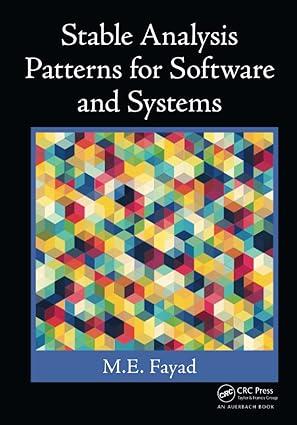Compare the traditional model and stable pattern of accessibility by using the following modeling essentials [14,15] as
Question:
Compare the traditional model and stable pattern of accessibility by using the following modeling essentials [14,15] as comparative criteria:
a. Simple: This property covers those attributes of the object-oriented model that present modeling aspects of the problem domain in a most understandable manner.
b. Complete (most likely to be correct): This property determines whether the object-oriented model provides internal consistency and completeness of the model’s artifacts. The model must be able to convey the essential concepts of its properties.
c. Stable to technological change: The model should be stable to technological changes and it cannot require any changes or modifications with change of technology, such as change of the media or the mechanisms.
d. Testable: To be testable, the model must be specific, unambiguous, and quantitative wherever possible, so that we can run an infinite number of scenarios with the context of the pattern.
e. Easy to understand: In addition to the familiarity of the modeling notations, the notational aspects, design constraints, and analysis and design rules of the model should be simple and easy to comprehend by customers, users, and domain experts.
f. Visual or graphical: A picture is worth a thousand words! As a user, you can visualize and describe the model. The graphical model is essential for easier visualization and simulation.
Step by Step Answer:






